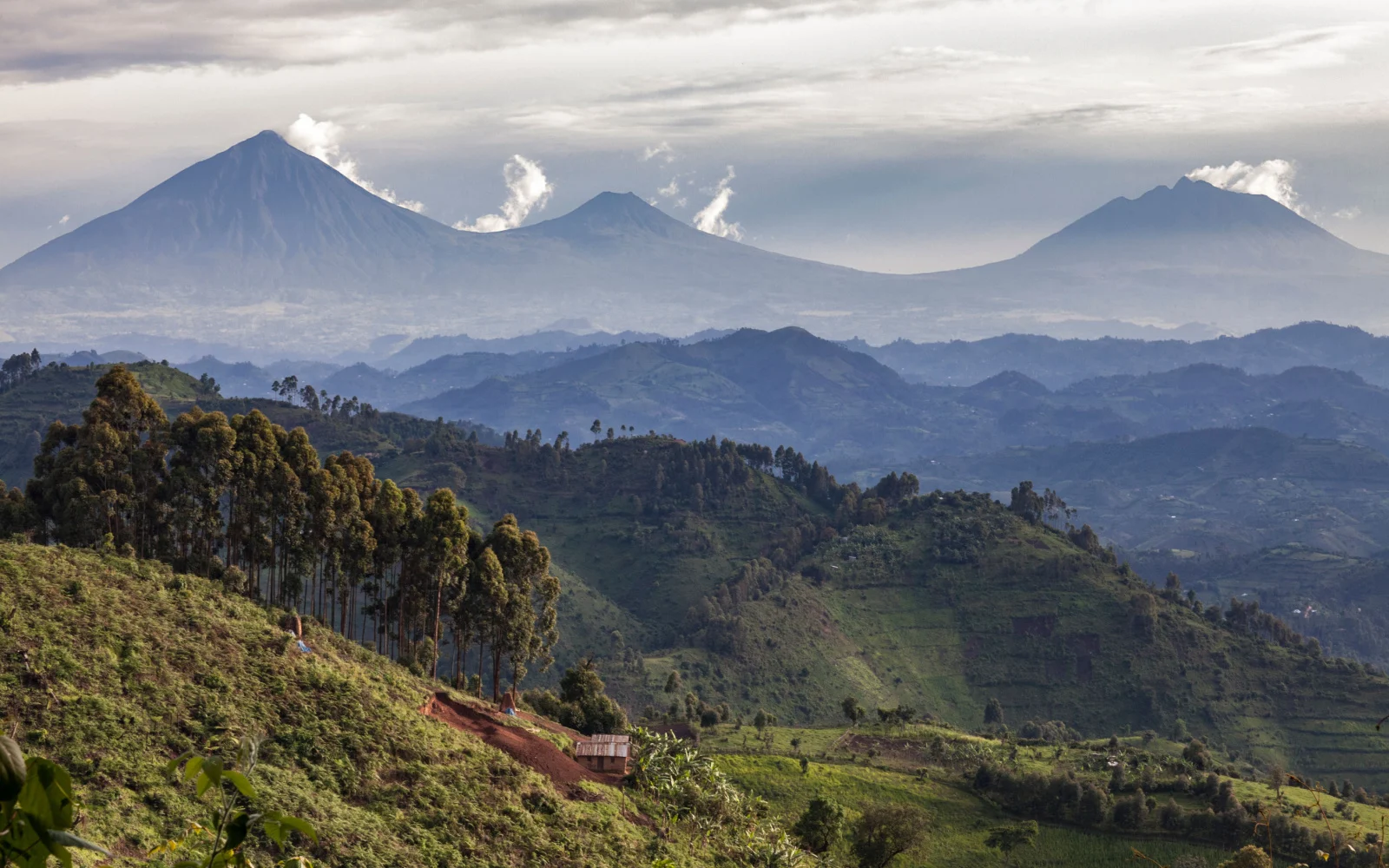What's the best time to visit Rwanda?
The best time to visit Rwanda is from June to September, offering dry conditions ideal for mountain gorilla trekking and wildlife watching. During these months, the malaria risk is lower and the terrain of Volcanoes National Park is more navigable.
It’s also a culturally vibrant time with events like the Kwita Izina gorilla naming ceremony and the Rwanda Film Festival, though advance booking for accommodations and permits is essential due to high demand.
Rwanda gives you glimpses of one of Africa’s oldest rainforests and its mountain gorillas, huge parks teeming with wildlife, and dramatic views of volcanoes and tranquil lakes. Let’s look at the best time to visit Rwanda to help you plan the perfect trip to this Sub-Saharan gem!
We’ll show you the overall best time to visit Rwanda along with the cheapest, least busy, and worst times to go. Popular things to do, weather, and annual festivals are highlighted for each season to help you pinpoint the right time to go!
Overall Best Time to Visit Rwanda
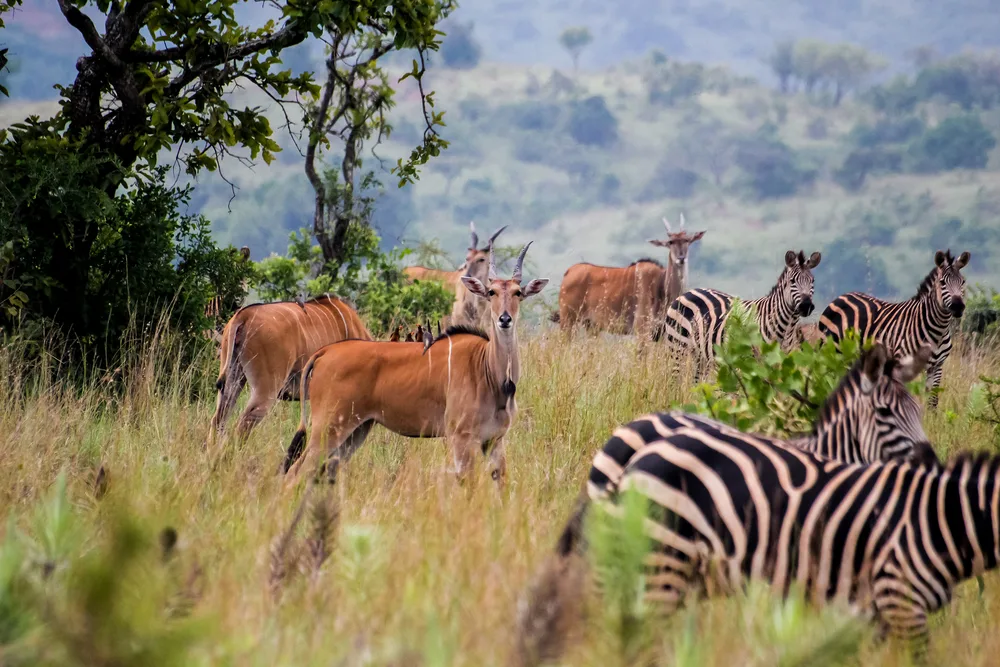
BGStock72/Shutterstock
The best time to visit Rwanda is June to August. It’s Rwanda’s longest dry season, so conditions are usually perfect for viewing mountain gorillas and exploring outdoors.
If you’re heading to Rwanda for a chance to track and see the fascinating “troops” of mountain gorillas, chimpanzees, and monkeys in the lush rainforest amid the Virunga Mountains, you can’t pick a better time than June, July, or August.
That’s because the weather cooperates nicely with pre-planned primate treks and tours, one of the most popular reasons to visit Rwanda.
Expect daily highs in the low 80s with overnight lows settling in the low 60s during this time of year. Rwanda’s weather doesn’t vary much in terms of temperature, but rainfall slacks off from June to August for hiking and primate viewing:
- June: 62-80°F; 3-4 rainy days
- July: 61-81°F; 2 rainy days
- August: 63-82°F; 5-6 rainy days
With so little rainfall during this 3-month period, you’ll encounter dry paths as you trek through the rainforest in search of gorillas, chimps, and chattering monkeys. These same paths become muddy and even impassable during the wet season.
The dry conditions from June to August also hack away at surrounding vegetation, making it a little easier to spot wildlife in the rainforest than when constant rain promotes lush, leafy growth that interferes with your views.
But it’s not just primate tracking that is at its best from June to August. In Volcanoes National Park and Akagera National Park, less-lush vegetation contributes to better landscape and wildlife (buffalo, elephants, etc.) viewing.
You’ll find a wide range of animals gathering around watering holes for a much-needed drink as the landscape harbors less water during this time of year. With less standing water, malaria risk plummets during these months and you won’t be hassled with itchy, painful mosquito bites.
Here’s a look at the average price per night for 2-5 star accommodations around Rwanda, according to data we’ve collected and averaged from Google Hotels:
- June: $188/night (2-star as low as $42/night)
- July: $358/night (2-star as low as $39/night)
- August: $345/night (2-star as low as $35/night)
While the nightly averages make it appear costly to visit Rwanda during the dry season, you can find 2-star hotels for as little as $35-$42/night between June and August. It’s the 4- and 5-star hotels and lodges that will cost you a pretty penny!
While spending time outdoors is a major draw for tourists coming to Rwanda this time of year, don’t miss the chance to attend some significant local events and festivals between June and August:
- Rwanda Film Festival (Jul.) in Kigali highlights African and international film and cinema every July with works shown by dozens of filmmakers
- Ubumuntu Arts Festival (Jul.) celebrates humanity (“Ubumuntu”) with dance, music, artwork, and drama performances over 10 days at the Kigali Genocide Memorial amphitheater
- Kigali UP (Jul./Aug.) is a Rwandan music festival featuring live musical acts from around the country with international artists joining in for a day of concerts, dancing, and food
- Umuganura Festival (Aug.) is the annual harvest festival in Rwanda, as local music, dance, and food takes over the country with all villages participating in this national holiday
- Kwita Izina Ceremony (Aug./Sept.) in Volcanoes National Park (Kinigi) is a ceremonial naming of baby mountain gorillas with music, dancing, and educational lectures
The only downsides? Prices aren’t at their lowest, gorilla permits are in high demand this time of year (so book in advance), and you’re likely to encounter bigger crowds, jockeying for open slots on primate tours and rainforest treks.
Cheapest Time to Visit Rwanda
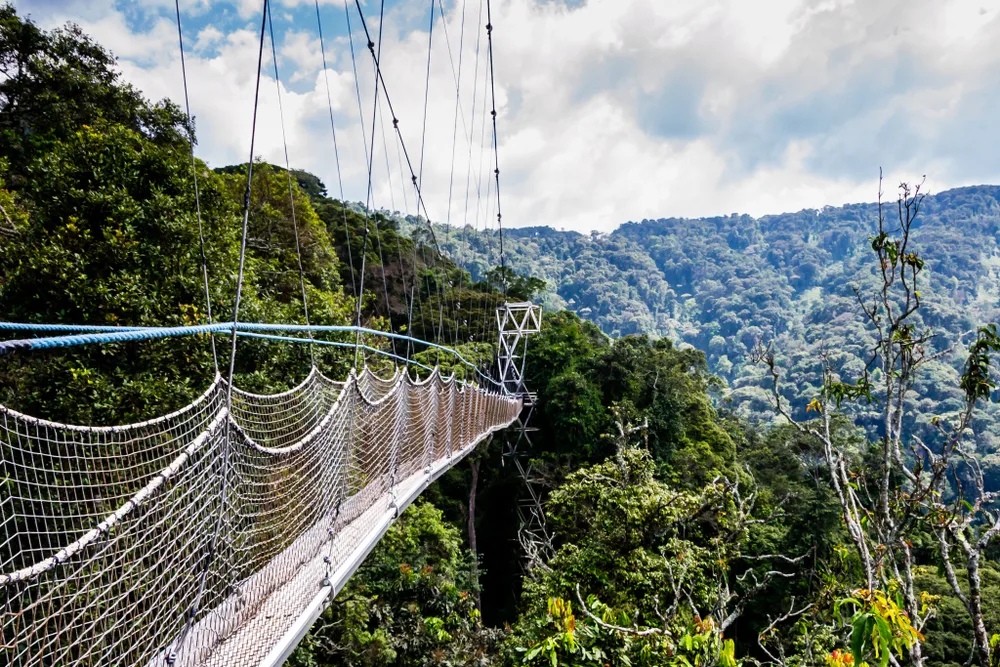
Tety Dotsenko/Shutterstock
The cheapest time to visit Rwanda is from April to June. These 3 months see the lowest average rates on hotels around the country as the rainy season rages, then quiets in Rwanda.
April, May, and June might be the best time to visit Rwanda if you’re trying to keep your trip budget to a minimum and don’t mind making alternative plans if outdoor adventures don’t pan out.
You can expect quite a bit of rain and humidity around Rwanda with anywhere from 14-20 rainy days between April and May and muggy conditions with so much moisture in the air. June is the start of the dry season, making it a much better (though a bit more expensive than April or May) choice.
- April: 63-78°F; 20 rainy days
- May: 63-78°F; 14 rainy days
- June: 62-80°F; 3-4 rainy days
With so much rain and near-constant cloud cover, the conditions are far from ideal for the famous primate tracking tours through the rainforest. Paths through the jungle become muddy and harder (or impossible) to navigate.
The heavy rains of April and May also make the vegetation in the rainforests and parks explode with growth, obscuring views of wildlife like mountain gorillas and forest elephants. That makes wildlife expeditions less successful during this time of year.
But all this rain can create a fine opportunity to spend some time exploring Rwanda’s significant and solemn history. Take a rainy day to head to the Kigali Genocide Memorial, the Ethnographic Museum in Butare, or the thatched King’s Palace Museum.
It’s also a great time for bird watching in Nyungwe National Park. Hundreds of migratory and resident bird species are frolicking and flying about in the wet season, which creates abundant food and water sources.
You’ll find that prices for accommodations are very reasonable from April to June, accounting for all the rain and humidity that makes it less popular to visit this time of year. Here’s what Google Hotels data averages look like for this period:
- April: $141/night (2-star as low as $44/night)
- May: $158/night (2-star as low as $42/night)
- June: $188/night (2-star as low as $42/night)
While the average nightly rate looks higher due to the 4- and 5-star hotels and rainforest lodges across the country, there are plenty of more affordable lodging options closer to the $40-$45/night range. Just be selective when you’re booking if you’re keeping to a budget.
Another benefit of visiting during the cheapest time of year is that you’ll deal with smaller crowds and better slot availability for primate tracking tours and park visits. Lower occupancy at lodges and hotels make it easier to find available rooms closer to your travel dates.
You’ll find some events happening during this time of year, though not as many as the peak season:
- Icyunamo (Apr.) is a time of remembrance and respect for the victims of the 1994 genocide in Rwanda with the “Walk to Remember,” a solemn march from the parliament building to the Amphora National Stadium
- Basketball Africa League Finals (May) in Kigali’s BK Arena is a heavily-attended sporting event as the top teams battle it out on the court to become the BAL champions
You won’t find a better time of year for affordable accommodations in Rwanda, but be sure to balance your expectations for this period due to the dreary forecasts and poor conditions for wildlife viewing.
Least Busy Time to Visit Rwanda
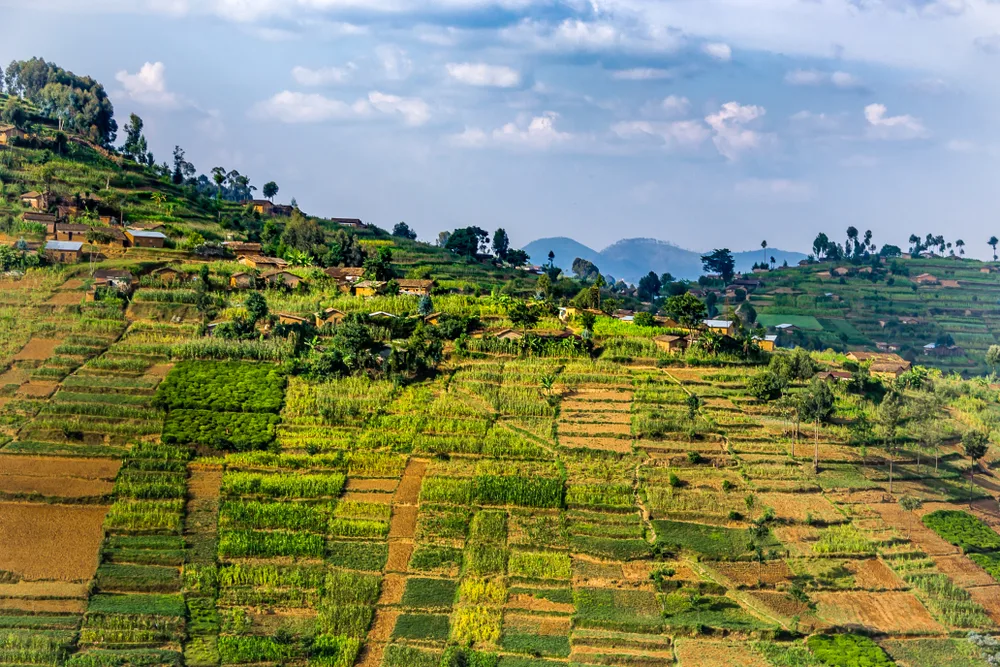
Tetyana Dotsenko/Shutterstock
The least busy time to visit Rwanda is April through May, when fewer visitors come to the country as heavy rains pelt the landscape and make conditions poor for primate viewing.
If you’re hoping to sidestep big crowds, enjoy wide-open availability for hotels and tours, and experience Rwanda outside of the busy tourism season, April and May can be a good time to visit because they see the fewest visitors.
But since so many people come to Rwanda in hopes of seeing mountain gorillas, chimpanzees, and monkeys in their natural rainforest habitats, it can be a real disappointment to arrive during two of the rainiest months of the year.
It’s no joke: The rain is heavy and you’ll experience anywhere from 14 to 20 rainy days during the month if you come in April or May. April is the wettest month of the year across Rwanda, with May sitting in 3rd place (just behind March, which sees 16-17 rainy days):
- April: 63-78°F; 20 rainy days
- May: 63-78°F; 14 rainy days
The effects of all this rain make it a rough time to go on a mountain gorilla or chimpanzee trek through the rainforest. The thick, jungled paths become muddy and challenging to travel, mosquitoes (and malaria risk) increase, and newly-dense vegetation hides wildlife from view.
While every single day won’t be rainy, you’ll run into more wet days than dry this time of year. That makes it hard to plan outdoor treks in advance, but the bonus here is that it’s a much less busy time with fewer tourists.
As a result, you’ll probably be able to book your tickets and mountain gorilla tracking permits without worrying about purchasing them far in advance. If you see a clear day in the forecast during your trip, go ahead and book your trek and enjoy the less-crowded hike to see gorillas and primates in the wild!
With indoor attractions like the Kigali Genocide Memorial, Rwanda Art Museum, and Kandt House Museum to explore on rainy days without big crowds, you won’t be completely let down by a visit during April or May.
The true upsides of visiting during this wet and dreary period is the lower price on hotels and better availability for popular primate tracking tours and lodging. Here’s what Google Hotels data shows us about pricing during April and May:
- April: $141/night (2-star as low as $44/night)
- May: $158/night (2-star as low as $42/night)
There aren’t a lot of events happening during these rainy months as Rwanda takes a little time to slow down and prepare for the coming peak season, but the Icyunamo memorial event and the Basketball Africa League (BAL) Finals take place during these months.
Worst Time to Visit Rwanda
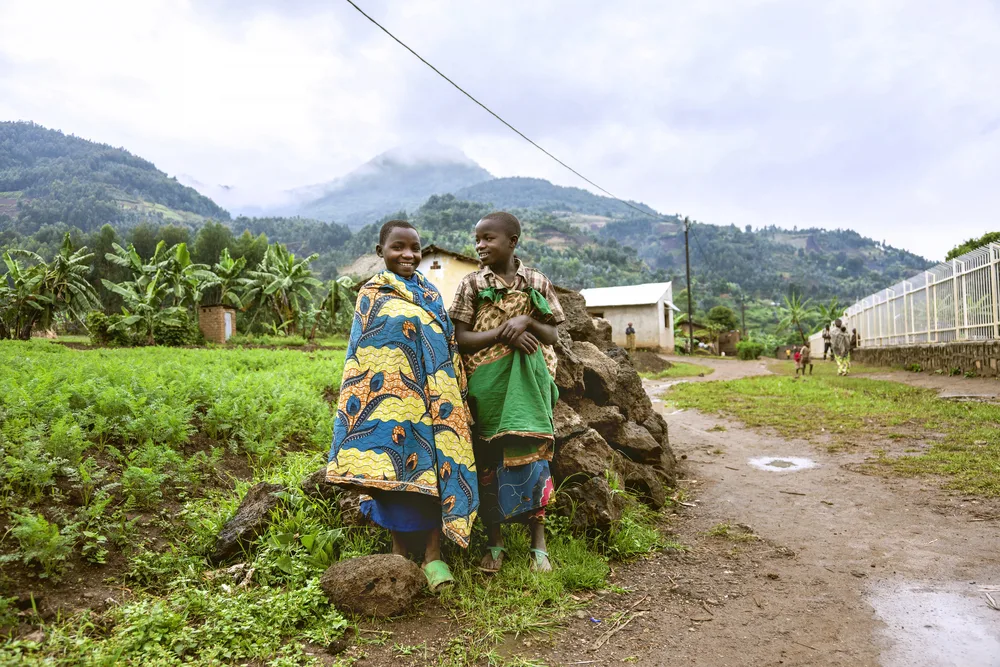
BYUMBA, RWANDA – SEPTEMBER 9, 2015: Unidentified kids. Two Rwandan children who wear traditional clothes. They seem happy with their smiling faces/MogulArt/Shutterstock
The worst time to visit Rwanda is during March and April. These are the wettest and most humid months of the year, throwing a wrench into mountain gorilla tracking plans.
April has made appearances here as one of the cheapest, least busy, and — yes, worst — months to visit Rwanda, but March also belongs in the mix. Why? It’s the near-constant rainfall you’ll experience when you visit during either month.
March and April are Rwanda’s two rainiest months of the year, seeing anywhere from 16 to 20 rainy days in each 30-day period on average:
- March: 63-81°F; 16-17 rainy days
- April: 63-78°F; 20 rainy days
All that precipitation takes effect in making the rainforests extra-dense and lush, washing long-trodden rainforest walking paths into a muddy mess, and making popular primate treks much more challenging and less rewarding with fewer chances to actually see mountain gorillas, chimps, and monkeys.
While the temperatures aren’t unbearable this time of year (or any time of year, as Rwanda experiences a very stable temperature year-round), you’ll find yourself wishing for dry days if you come to the country during March or April.
As we’ve mentioned, you may appreciate the lower prices per night at hotels and lodges around Rwanda this time of year (see Google Hotels data below) and the fact that tours and popular attractions aren’t clogged with huge crowds, but you’ll pay for these benefits with poor weather.
- March: $354/night (2-star as low as $33/night)
- April: $141/night (2-star as low as $44/night)
On rare dry days during these months, you’ll find time to explore the mountainous Volcanoes National Park or hike down the birding trails at Nyungwe National Park to see hundreds of bird species that love the rainy season.
It’s hard to argue with the pretty rainforest scenery this time of year, too. Leafy green vegetation might hide the gorillas and chimps you’re hoping to see, but it sure looks beautiful with the foggy mists of the humid air.
There’s not much going on during this quiet time of year in Rwanda, but you can keep an eye out for these festivals and events:
- Rwanda Mini Film Festival (Mar.) is held at the Rwanda Cinema Center where filmmakers, students, and attendees gather for screenings of local films with an annual theme
- Genocide Memorial Week (Apr.) is also called Icyunamo and happens the week of April 7th each year to honor the genocide victims with silent marches and ceremonies as people come to pay their respects
There are definitely a few upsides to coming during March or April (smaller crowds and better availability for tours and hotels), but the cons (heavy rain, few events, and poor wildlife viewing) will likely outweigh these benefits.
Frequently Asked Questions
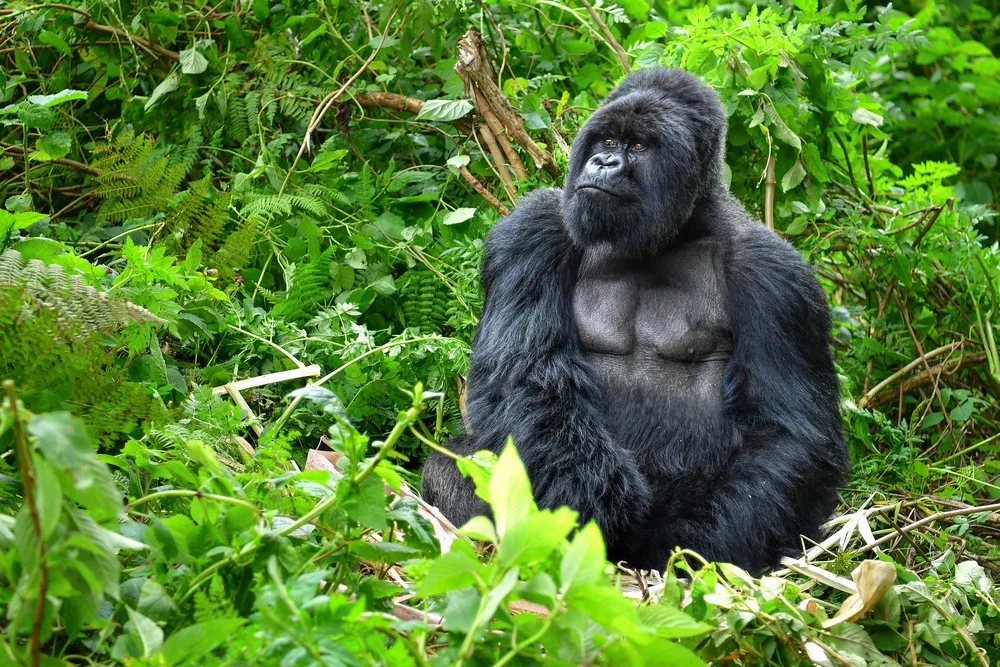
Onyx9/Shutterstock
Thinking about planning your trip during the best time to visit Rwanda? Get familiar with some of the most common frequently asked questions first.
What is the best time of year to see gorillas in Rwanda?
The best visibility for gorilla tracking in Rwanda is from June to September, thanks to the dry season. A secondary favorable period is December to February, offering good conditions for sightings.
How many days do you need in Rwanda?
At least 10 days are necessary to fully immerse yourself in Rwanda's natural and cultural beauty, including gorilla tracking. This duration allows ample time for exploring national parks, museums, and historical sites without feeling rushed.
When should I visit Kigali?
The best time to visit Kigali is between June and August, when the weather is dry and conducive to touring. During these months, visitors can comfortably explore outdoor attractions and enjoy the vibrant city life.
Is Uganda or Rwanda better for gorilla trekking?
Rwanda offers a superior gorilla trekking experience compared to Uganda, thanks to its higher concentration of gorillas in Volcanoes National Park. Additionally, the proximity of the park to Kigali makes it a more accessible option for travelers.
How safe is gorilla trekking in Rwanda?
Gorilla trekking in Rwanda is considered very safe as long as precautions and guide instructions are followed on your trek. The mountain gorillas you’ll see in Volcanoes National Park have been exposed to humans many times and are considered habituated.
So, What’s the Best Time to Visit Rwanda?
We’ve found that the best time to visit Rwanda overall is from June to August, which encompasses the driest, most pleasant weather for outdoor adventures and the most ideal viewing conditions for wildlife like gorillas, chimps, monkeys, elephants, and boars.
No matter when you’re planning on visiting, you’re sure to leave with a new respect and fondness for this Central African country. Happy travels!



